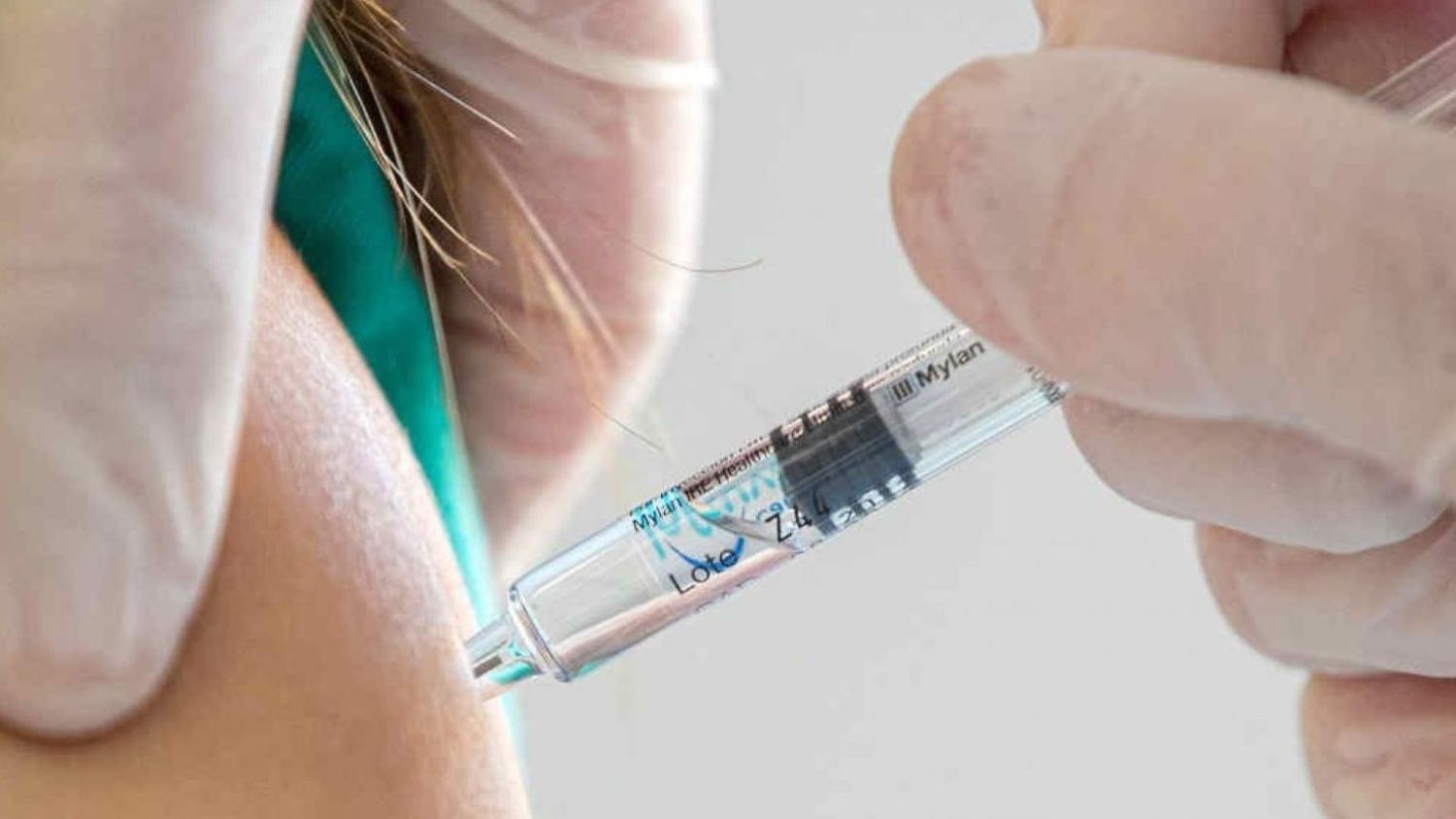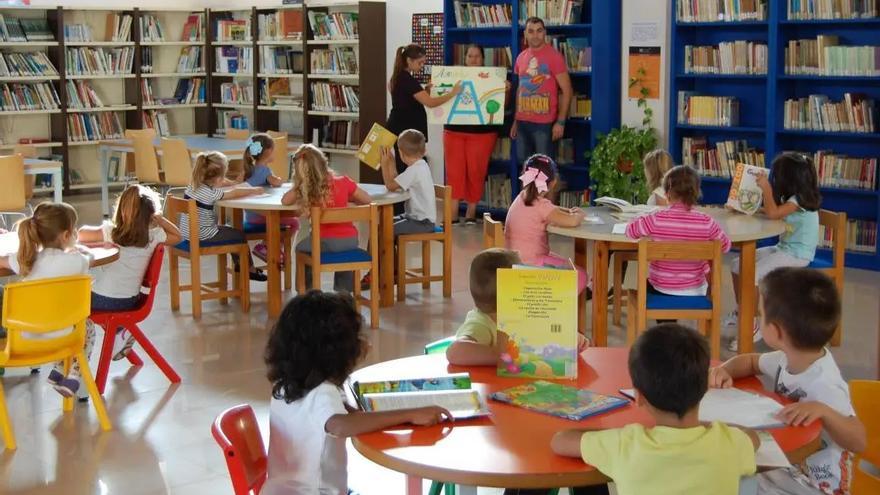HEALTH. Flu Vaccine Protects Children from Infection and Hospitalization from the Illness, Study Finds
Flu Vaccine Protects Children from Infection and Hospitalization from the Illness, Study Finds
 A study published in ‘Eurosurveillance’ has shown that the Spanish flu vaccination campaign for children aged 6 to 59 months during the 2023/24 season was effective in preventing acute respiratory infections (ARI) and hospitalization, after for the first time vaccination is recommended for this age group at the national level.
A study published in ‘Eurosurveillance’ has shown that the Spanish flu vaccination campaign for children aged 6 to 59 months during the 2023/24 season was effective in preventing acute respiratory infections (ARI) and hospitalization, after for the first time vaccination is recommended for this age group at the national level.
In the context of Children’s Health Day 2024, which is celebrated on October 7, this research highlights that continuous efforts must be made to increase vaccination coverage among children for future seasons.
In this sense, influenza A was dominant in the 2023/2024 season, with influenza B being rarely detected. The childhood flu vaccination campaign began in autumn 2023, with national vaccination coverage of 31.6 percent.
The case-control study with negative results analyzed surveillance data from 12 Autonomous Communities and 27 hospitals, and included pediatric patients between 6 and 59 months who had been tested for influenza.
The study, coordinated by the European Center for Disease Prevention and Control (ECDC), included 1,364 patients who attended primary care with acute respiratory infections, 244 of whom tested positive. flu, and 302 patients hospitalized with severe acute respiratory infections (SARI), 48 of whom tested positive for flu.
The patients’ influenza vaccination data were then collected from the vaccination records of each autonomous community. Vaccine effectiveness was determined by comparing the vaccination rate of those who tested positive for the flu with the rate of those who did not test positive, with vaccination rates being higher for those who tested negative (i.e. controls) indicative of effectiveness.
Vaccine efficacy was then adjusted for potential confounders such as sex, age in months, epidemiological week, presence of chronic diseases, and region or hospital for the ARI or SARI models.
EFFICIENCY OF MORE THAN 70%
The study estimated the effectiveness of the flu vaccine at 70 percent against any type of flu in Primary Care patients with ARI, and at 77 percent against flu in hospitalized patients with SARI.
In Primary Care, the influenza vaccine turned out to be 77 percent effective (95% CI: 56 to 88%) against A(H1N1)pdm09.
When influenza A viruses were subtyped, A(H1N1)pdm09 was the most common influenza virus subtype, with 61.2 and 43.8 percent in primary care and hospitals, respectively, followed by A( H3N2), with 19 and 18.8 percent, respectively, and unsubtyped influenza A viruses, with 18.6 and 35.4 percent, respectively. The circulation of the influenza B virus was low.
IMPLICATIONS FOR PUBLIC HEALTH
There are an estimated 109 million influenza virus infections in children aged 0 to 59 months worldwide, and infections can lead to serious illness and outcomes. In Spain, children under 5 years of age have the second highest rate of hospitalization due to flu, only behind the age group over 65 years of age.
The results of this study are consistent with previous research supporting the effectiveness of influenza vaccines in protecting children’s health.
More than 721,000 minors are in a situation of visual poverty due to economic problems
Spain is far from reaching a zero rate of visual poverty, that caused by a situation of economic vulnerability. Although the rate has been slightly reduced compared to 2022, the average number of children who cannot enjoy good vision due to their family’s financial problems stood at 8.4 percent at the end of last year. In this way, the number has been reduced by nearly 40,000 minors, from 761,157 to 721,497 minors in 2023.
These data were presented this Thursday by the Visión y Vida association, at the press conference organized with the support of Correos Express, where the data from the report presented in 2022 was updated, in which the prevalence of ‘ visual poverty’ in Spain.
On this occasion, figures have been given for regions with the highest childhood visual poverty, thus the Autonomous City of Ceuta leads the table with 19.8% of child poverty, followed by Asturias (11%), the Balearic Islands and Navarra (10.2% ), Melilla (10.1%), Valencian Community (9.6%), Andalusia (9.3%), Aragon (9%), Canary Islands (8.6%) and Catalonia (8.4%). Below the average, Galicia (6.2%), the Basque Country (6.4%), La Rioja (7.1%), Cantabria (7.2%), Castilla y León (7.4%), Madrid and Castilla-La Mancha (7.5%), Extremadura and Murcia (7.8%).
As for adults, it has gone from 6,126,847 to 6,103,451, from 12.9 percent to 12.7 percent at the end of 2023. This term, which emerged in the 2008-2014 crisis, was born linked to the situation of vulnerability that millions of families in Spain began to experience: energy poverty, food poverty and visual poverty.
Spain closed 2023 with a risk of poverty rate of 20.2% (the INE rules that a household is at risk of poverty when its income is below 60% of the national average). In the case of those under 18 years of age, the average rises to 27.10 percent.
The president of Visión y Vida, Salvador Alsina, has highlighted above all the importance of ending this problem in the child population, since “they are at school age, if they have any visual problem, it will be difficult for them to continue their studies regularly.” . (…) Poverty isolates, excludes and reduces future opportunities.”
HOW TO SOLVE THIS PROBLEM?
According to Alsina, one of the solutions is to know exactly how many children are in this situation and, to do so, “the first thing of all is the reviews.” “We do not fix anything, or we fix very little, with some of the solutions that have been made, of reducing the price of glasses, or of giving economic values to compensate them, but the first thing we have to do is really know how many boys and girls they don’t see well,” he warned.
According to the report, 59% of families do not check their children’s vision. Yes, pediatric check-ups are carried out, but in this pediatric check-up it is not the ophthalmologist or optician-optometrist who performs it, but rather it is usually the pediatrician, “and the check-up is very basic.” Therefore, the first point to solve, and it is what the Administration should listen to, is that all children must be checked.”
Secondly, it offers visual aids to those who need them. “When someone offers visual aids without having reviewed, they are starting to solve the problem at the top when it is necessary to start at the lowest point. First, reviews. Then, visual aids to those who really need them. You have to do a good screening and offer solutions to the most vulnerable, mainly to all those who we have seen who have childhood visual poverty,” he points out.
And, lastly, there must be a state plan or a national visual health plan for the entire population in general, and particularly those who are in a vulnerable situation. At this point he regretted that the Administration had not done anything. “If there are no financial resources, vision stops being a priority, vision does not hurt and stops being a priority”
The stimuli that encourage alcohol addicts to drink again lose their effect after six months of abstinence
The stimuli that encourage alcohol addicts to drink again lose their effect after six months of abstinence, as revealed by a study led by researchers from the Hospital 12 de Octubre and the Complutense University of Madrid, whose conclusions include ‘Addictive Behaviors’. ‘.
This tendency to direct attention to alcohol-related stimuli is called attentional bias. Some of the most frequent stimuli are places, such as the park or bar, where the patient used to drink or smells such as those of some drinks or those of those places.
“Attentional bias is a risk factor for relapse, since the individual feels constantly attracted to these signals, which can activate thoughts of consumption and intense desires. Its reduction can be an important therapeutic goal in hospital programs,” he said. highlighted the researcher from the Department of Psychobiology and Methodology in Behavioral Sciences of the UCM and the Research Institute of the Hospital 12 de Octubre i+12, Berta Escudero.
To carry out this study, 33 patients were recruited from the alcohol cessation program at Hospital 12 de Octubre, in the Dual Pathology Unit (Psychiatry Service), as well as 43 controls from the general population. All of them were evaluated at two time points, between one and three months of abstinence and at six months.
As the researchers explained, with this approach, clinical interventions could include techniques such as attention retraining to help patients divert their attention from alcohol cues or behavioral therapies focused on modifying the automatic response to those cues.
Measuring attentional bias may also serve as a useful tool to identify patients at risk of relapse. “Those with a more pronounced attentional bias toward alcohol may require additional monitoring and support,” Escudero added.
Finally, knowledge of these processes can help families be more understanding and create a safer environment that minimizes exposure to these triggers. In the case of patients, it is an incentive to work on self-regulation and managing their impulses, as well as working with their therapists to develop personalized strategies for managing stimuli and high-risk situations.
GENERAL ATTENTIONAL BIAS AND ALCOHOLIC BIAS
Also novel in this article is the evaluation of two types of attentional bias, general and alcoholic. The first refers to a difficulty in directing attention towards general stimuli, not related to alcohol. Meanwhile, alcoholic refers to the attraction to alcohol-related cues (wine, pub, hangover, etc.) and is characteristic of alcohol use disorder.
The director of the study, Laura Orío, has pointed out that the attentional bias towards alcohol improves during the abstinence process in patients diagnosed with Alcohol Use Disorder, while the same does not happen with the general attentional bias. “This opens new areas of research to explore how these two types of bias evolve and interact,” he stressed.
Among the next steps of the study, the researchers include long-term follow-up of the patients or comparison with other addictions to substances such as opiates or nicotine, among others.



Post Comment